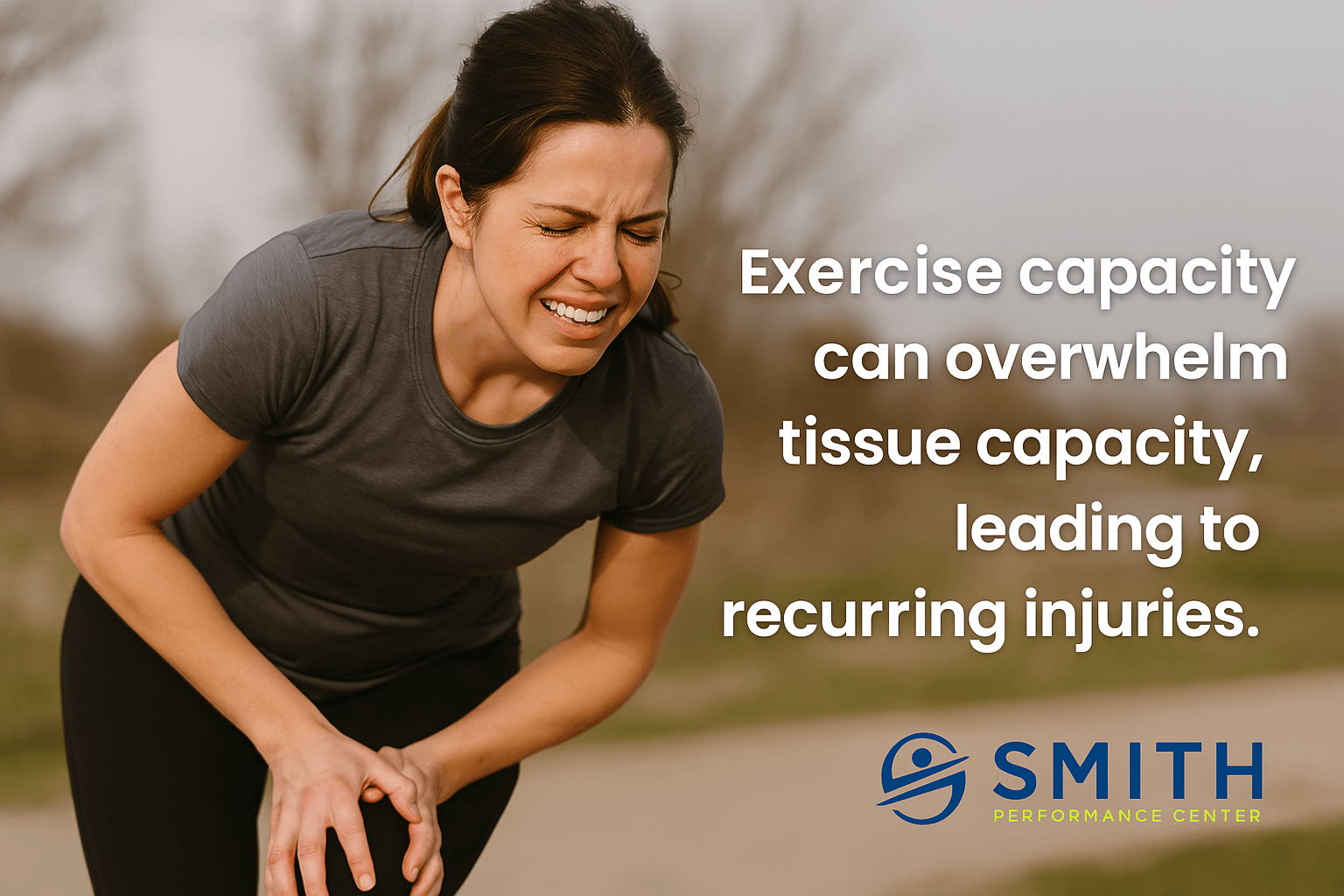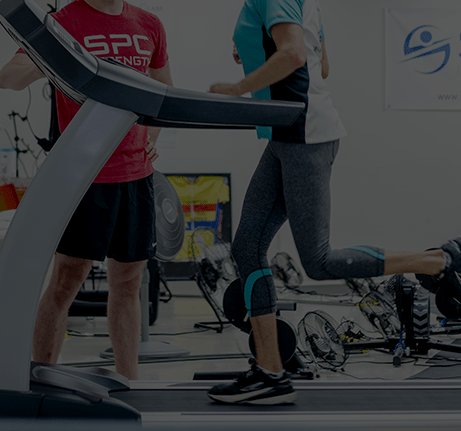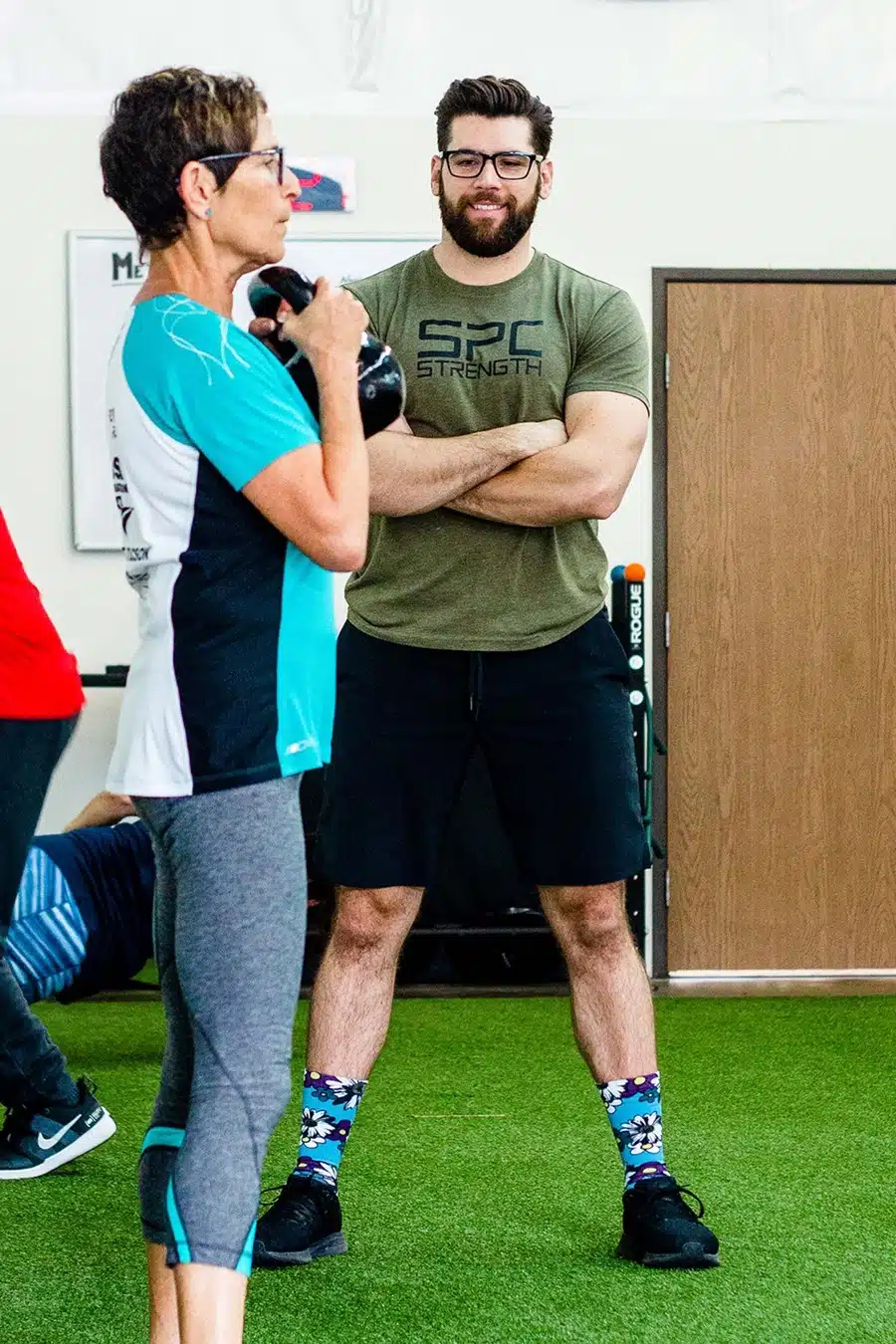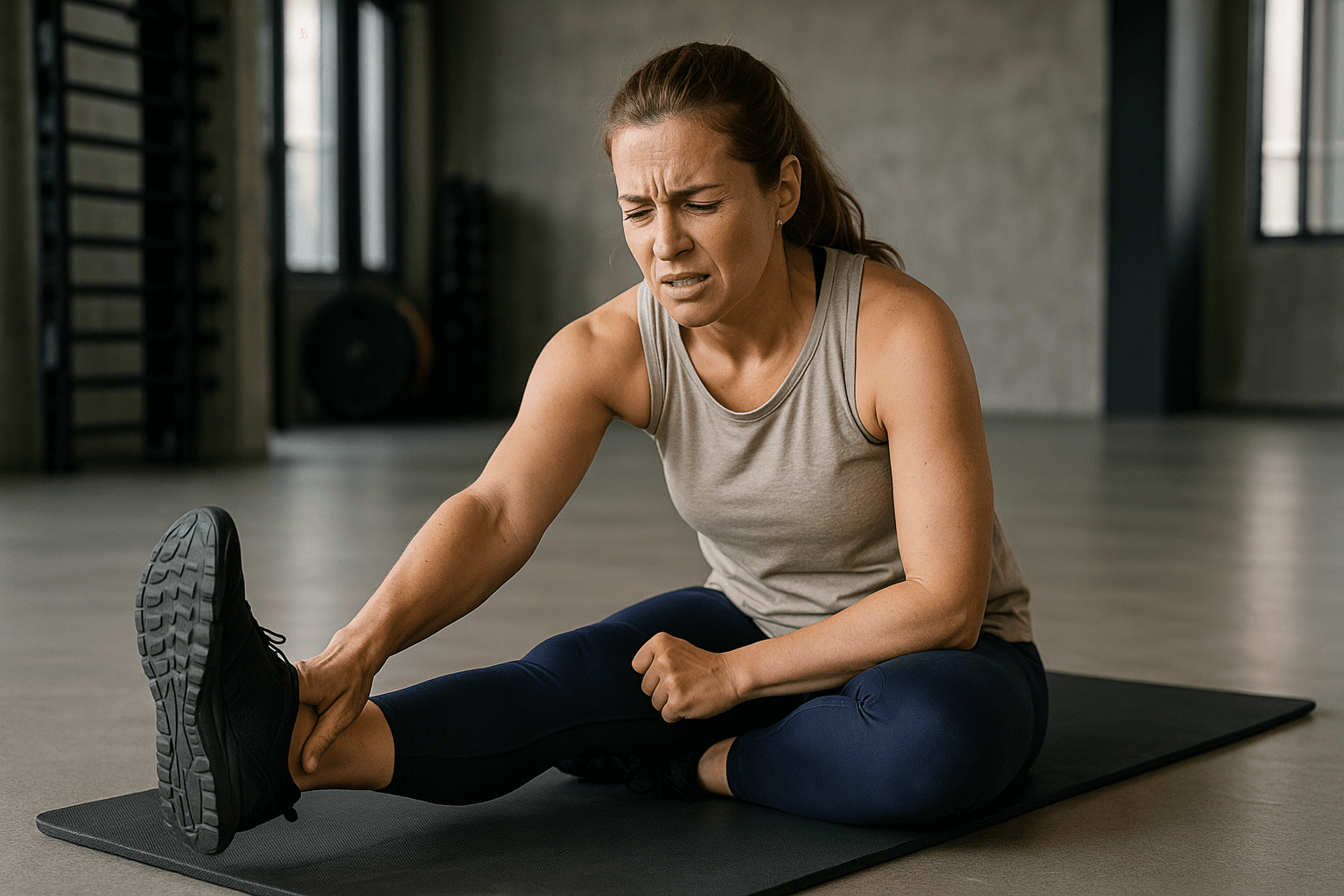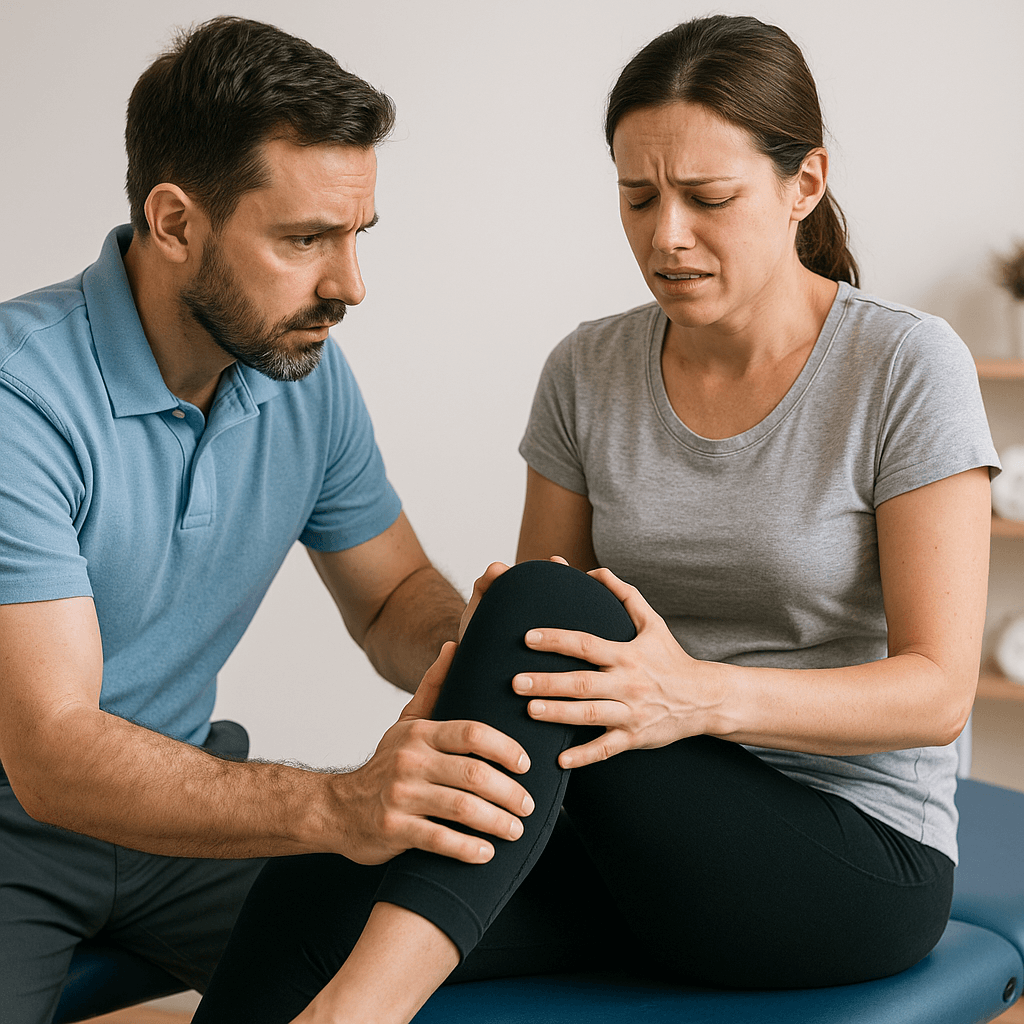A perfect time to build the exercise habit occurs when you overcome a painful injury. At Smith Performance Center (SPC), this happens during the “activity progression” phase after stabilizing symptoms. Unlike a standard exercise routine, activity progression focuses on managing and improving tissue capacity—your body’s ability to handle physical load without pain or injury.
If these terms sound unfamiliar, don’t worry. The following signs indicate you may have skipped the fundamentals of activity progression:
- The same injury keeps coming back when you try to exercise.
- You’ve eliminated certain movements entirely from your routine.
- You feel stuck with excessive soreness or stiffness after workouts.

A perfect time to build the exercise habit occurs when you overcome a painful injury.
Why Delaying Exercise Is a Mistake
Many individuals delay exercise until they feel completely better. However, this approach has drawbacks:
- Low Motivation and Habit Formation:
- Motivation for exercise tends to be fleeting. Those who maintain an exercise routine develop the discipline to show up consistently, even when motivation wanes.
- High motivation, such as during injury recovery, is the best time to build the habit by focusing on ability rather than intensity.
- Durable Results Come From Mastery, Not Avoidance:
- Taking time off often doesn’t solve injury problems. Persistent injuries typically stem from hidden triggers, not just obvious ones. Mastering the injury builds resilience and reduces recurrence.
- Inactivity Creates New Issues:
- Prolonged inactivity leads to muscle and tendon deconditioning, which can increase the risk of re-injury when you attempt your previous workout routine.
Your Path at SPC
At SPC, we’ve developed a clear plan to help you build fitness while overcoming an injury. Here’s how it works:
1. Your Home Plan: Manage Symptoms and Flare-Ups
The biggest hurdle to starting exercise is handling symptom increases. If daily activities cause large spikes in pain, your exercise plan must be carefully controlled or temporarily delayed.
Think of your daily activity as a spectrum. Some days are light and easy; others, like unloading heavy groceries, might push your body too far. A well-designed home plan helps you:
- Improve tissue capacity.
- Handle unexpected flare-ups.
- Safely transition to more active routines.
You have to own your daily activity first, then develop an exercise habit.
2. Learn How to Move Without Getting Worse
Designing a hard workout is easy. Designing one that improves tissue capacity without causing flare-ups requires:
- Skill and Experience: Understanding how to match load with your current tissue capacity.
- A Focused Plan: Prioritizing movement fundamentals over intensity.
- Key Signs: Learn tools to assess that your body is not having a good response prior to a full flare up.
Different tissues will show different signs when overloaded.
At SPC, we call this the “rehab standard.” It’s a systematic approach to ensure your tissues handle load safely, even when your brain craves a harder workout.
3. Consistent Support
Even with the perfect plan, setbacks can happen. Without support, a small flare-up can snowball into a month-long regression. Waiting to start exercise might seem safer, but it often leads to a prolonged inactive lifestyle.
SPC addresses this with:
- Check-ins with Physical Therapists: Regular assessments to address flare-ups and identify contributing factors.
- Collaboration with Strength Coaches: Coaches help adjust exercises, modify loads, and gradually reintroduce movements as your tissue capacity grows.
The Bottom Line
Rebuilding fitness after an injury requires a thoughtful, step-by-step approach. SPC is here to guide you through activity progression, manage symptoms, and build the resilience needed for a sustainable exercise habit. Waiting isn’t the answer.
Start today to reclaim your active lifestyle.

